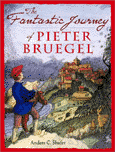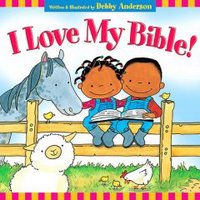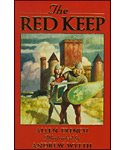The Dragon and the Raven, by G. A. Henty

The Dragon and the Raven
(London: Blackie & Son, 1885; reprint, Preston/Speed Publications, 1995)
Hb., 238 pp.
This is the first Henty novel I have read to my boys. If you are not familiar with Mr. Henty and his novels I would recommend you check out these sites for more information (about Henty 1, about Henty 2, reviews of his books). This sort of information is what prompted me about 7 years ago to begin collecting Henty novels for my boys to read one day. Henty’s books have a great reputation for historical accuracy and for upholding the values of courage, nobility, perseverance, and the like.
This specific book is set in the days of King Alfred of England in the late 800’s. In this time England was regularly invaded by Danish hosts. Alfred is the one who finally defeated the Danes and brought peace to England. In this story Henty creates for us a young Earl named Edmund who fights under Alfred and meets many adventures, in the typical Henty fashion. In the story Edmund is the one who introduces to England advances in warfare particularly naval warfare. In a way he seems to be a precursor to the famed British domination of the seas. Edmund fights the Danes, around England, ends up at the siege of Paris helping to defeat the Danes there and eventually finds adventures in the Mediterranean.
Henty’s concern for teaching history is evident in his preface where he writes:
“Living in the present days of peace and tranquility it is difficult to picture the life of our ancestors in the days of King Alfred, when the whole country was for years overrun by hordes of pagan barbarians, who slaughtered, plundered, and destroyed at will. . . From this terrible state of subjection and suffering the Saxons were rescued by the prudence, the patience, the valour and wisdom of King Alfred. In all subsequent ages England has produced no single man who united in himself so many great qualities as did this first of great Englishmen. He was learned, wise, brave, prudent, and pious; devoted to his people, clement to his conquered enemies. He was as great in peace as in war; and yet few English boys know more than a faint outline of the events of Alfred’s reign—events which have exercised an influence upon the whole future of the English people.”
In another regular Henty feature, the faith of Edmund, though not always at the forefront, does play an important part. The difference between the pagan Danes and the Christian Saxons is significant. It is seen even in how and why they fight. In an important scene, Edmund, the main character, answers a question from Freda a Danish maid.
“How is it that you, whose religion is as you say a peaceful one, can yet have performed so many deeds of valour and bloodshed?”
“I am fighting for my home, my country, and my religion,” Edmund said. “Christianity does not forbid men to defend themselves; for did it do so, a band of pagans might ravage all the Christian countries in the world. I fight not because I love it. I hate bloodshed, and would rather die than plunder and slay peaceful and unoffending people. You have been in England and have seen the misery which war has caused there. Such misery assuredly I would inflict on none. I fight only to defend myself and my country men and women. Did your people leave our land I would gladly never draw sword again” (p.116)
This makes this a valuable lesson for young boys in understanding how fighting fits in a Christian worldview.
Overall, this book started very slowly. Eventually it got going with battles and adventures. In the end my boys were enjoying it, but they admitted early on it was less enjoyable. Even as the action increased, I did think it was not as good a story overall as the first Henty novel I read myself, The Reign of Terror. The language from over a hundred years ago is different in various ways so I found myself regularly editing and paraphrasing. With an audience slightly older this would become less important. I would recommend this book, but know that your crowd will need to have mastered the ability to endure with a book for a while- a very useful ability to acquire!







